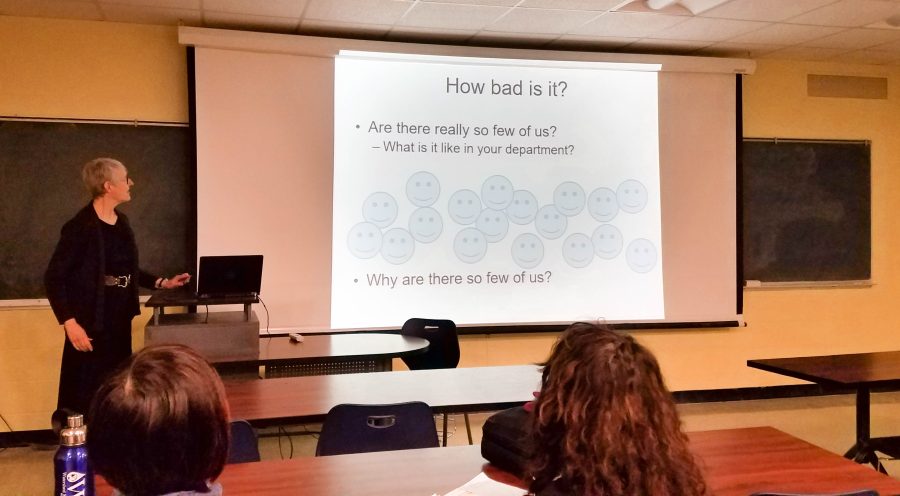Story by Ciara Benham, Staff writer
The Murray State ADVANCE program addressed gender inequality in STEM on Jan. 31.
The seminar, titled “Women in Science: Dress Like a Lady, Act Like a Man, Work Like a Dog,” was led by Patricia Kelley, professor emeritus at the University of North Carolina, Wilmington. She talked about the statistics and possible solutions regarding the disproportion of women in STEM.
“Although women make up half the total U.S. workforce, only 28 percent of the science and engineering workforce is female, despite improvements in recent years. Substantial differences in the proportion of women exist among S&E fields, with the fewest women represented in the physical sciences and engineering,” according to the Murray State ADVANCE web page.
Kelley said different factors may influence women to stay away from science.
The ADVANCE seminar also offered possible solutions to the disproportion and underrepresentation of women in STEM.
Kelley said that most women in STEM made their career choice from an introductory level course or teacher influence. To encourage females to pick STEM fields, Kelley suggested calling on female students more, not ignoring their raised hands and not interrupting them as they speak.
The Murray State ADVANCE program studies the recruitment and retention of women faculty in STEM. They also offer seminars, workshops and mentoring programs.
Maeve McCarthy, ADVANCE program director and mathematics professor, said that ADVANCE addresses issues in hopes of changing work environments
“Historically, women have been underrepresented in the workforce,” McCarthy said. “Addressing this underrepresentation will lead to more diversity in the workforce, in academia and at Murray State.”
Both students and faculty are welcome to attend seminars, McCarthy said, but the primary focus of the program is on female faculty. The program emphasizes the factors that directly affect the faculty at Murray State and the program’s goals reflect those issues.
“We need to retain the women we hire instead of losing them after a few years,” McCarthy said. “A more practical spousal hiring policy would be very helpful. A childcare facility on campus is needed. Bias training for search committees and tenure and promotion committees is needed.”
McCarthy said in fall 2017, Murray State had 143 tenure-track or tenured faculty members total in the STEM and Social, Behavior and Economic Sciences Departments. Out of the total, 104 faculty members were male, while only 39 were female.
Female faculty and staff at Murray State have also spoken up about the topic of underrepresentation of women in STEM fields.
Michelle Casey, a paleoecologist and professor of environmental sciences, said that introducing more women into STEM fields would have societal and global benefits.
“Women and any underrepresented minority bring in a diversity of ideas, backgrounds and experiences to science and engineering, which contributes to more creative approaches and solutions to problems,” Casey said. “We need a mix of men and women and people of all races and ethnicities to go into science and engineering if we hope to create the best solutions to the problems facing society, everything from combating global climate change to determining how to feed our growing population.”
Casey’s advice to girls who want to go into the science and engineering field is to “go for it.”
“Every woman in science that I know, no matter how successful, has at one time or another felt like a fraud,” Casey said. “Like they weren’t up to the challenge, didn’t belong, or somehow weren’t as good as everyone else thought they were. I think women need to be kinder to themselves and really try to take objective stock of successes and achievements.”
You can email Maeve McCarthy or visit murraystate.edu/advance to learn more about the program.




























































































